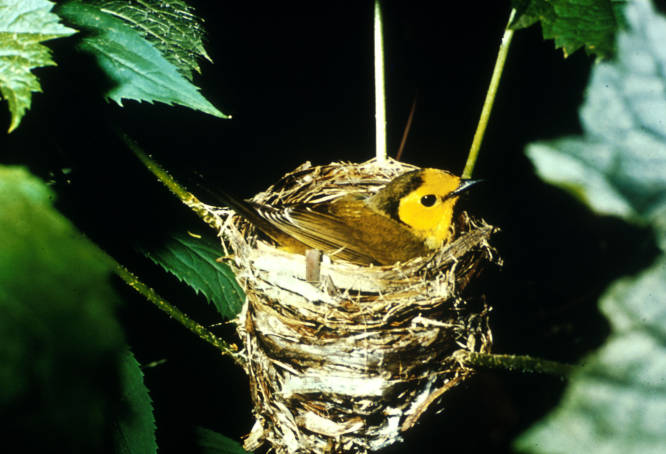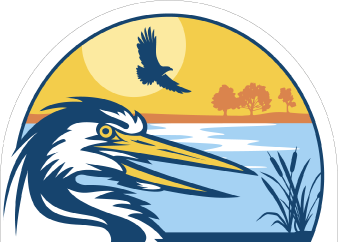
Like most Western New Yorkers, I’ve been monitoring the arrival of spring with great interest. One day it’s sunny and 75°; the next, I’m wondering if I put the snowblower away too soon! Despite the usual weather whiplash, we do have an early spring this year. Trees and flowers are blooming early, and I regret to say that I’ve already seen my first mosquito! If you happen to be a bird watcher like me, or a backyard bird feeder, or a photographer, or just a nature-loving person, all of this may lead you to another question. Does this mean the migratory birds will be back early too?
The answer is not a simple one. Migration timing is a complex issue that depends on the type of bird, what it eats, where it breeds and where it spends the winter. The most useful predictor of whether a bird species will show up early in a milder year is if it is a long-distance or short-distance migrant.
Click here to become a member!
Click here to donate!
True long-distance migrants are species that travel many thousands of miles between their summer and winter habitats. For example, the purple martins nesting at the Iroquois headquarters building travel over 5,000 miles from their wintering grounds in Brazil. Scarlet tanagers that breed on the Onondaga Nature trail and cerulean warblers often heard along Swallow Hollow, come from northern and central South America. Many other species common on the refuge, like hooded warblers, oven birds and wood thrushes, travel from Mexico, Central America and the Caribbean. Long-distance migrants generally travel quickly, making the 600-mile crossing of the Gulf of Mexico in approximately 10 – 20 hours. Once back in the US, they can travel between 20 – 100 miles per day, stopping to rest and eat only when necessary. Even the tiny ruby-throated hummingbird can fly over 600 miles non-stop.
Short-distance migrants are species that winter in southern United States and northern Mexico. Some of our local short-distance migrants, like the gray catbird, red-winged blackbird, song sparrow, and eastern phoebe, have completely migratory populations where all birds fly south for the winter. Other species, like blue jays, robins, and bluebirds, have partially migratory populations, with some individuals moving south while others spend the winter in our area. These birds tend to arrive earlier in the spring and move gradually northward as weather conditions improve.
As you may have guessed, the short- distance migrants are more able to adapt to a warmer year by traveling along with the weather patterns. The long-distance migrants, however, have no way of knowing what the weather is doing in Western New York when they’re preparing to leave Central and South America. Migration timing for these birds is a hard-wired pattern acquired over many years of evolution. Climate change is currently causing more erratic weather events, and generally earlier springs in our area. Since they can’t adapt to changes in weather as easily as short-distance migrants, this puts long-distance migrants, including some of our most interesting and beautiful songbirds, at even greater risk.
Local data collected by the Buffalo Ornithological Society shows that over the past 50 years, short-distance migrants have begun arriving on average 7-8 days earlier, while long-distance migrants are only arriving about three days earlier. This may not seem like a lot, but migrating and breeding birds depend on local conditions for food and nesting opportunities. Arriving too early or too late can result in missing annual insect hatches, or plant blooming and fruiting that typically match up with the nesting season. There may be competition for food and nesting spots with earlier arriving birds, and unusual temperature or precipitation patterns can cause nest failures.
So what can we do? Reporting early bird sightings to e-Bird, participating in local bird counts, like the Buffalo Ornithological Society’s May count, and being active in local nature groups can help track changes in bird behavior. Supporting habitat restoration projects at parks and refuges or providing food and habitat sources in your yard is helpful to both long- and short-distance migrants. Putting out and monitoring hummingbird and oriole feeders early, or in bad weather, can be helpful for birds dependent on fruits and nectar. To help insect-eating birds, avoid pesticide use and keep dead leaves and plant stalks in your yard over the winter to provide habitat for insects. Perhaps most importantly, providing a variety of natural food sources, like flowering and seeding trees and plants, that bloom and produce at different times of year can help birds find much needed resources all year long. In the meantime, it’s now peak bird migration by the standards of any year, so get out there and enjoy the show!
By Emma DeLeon

